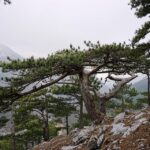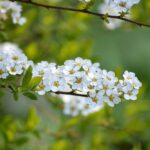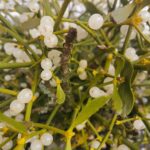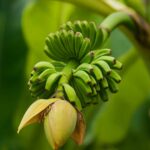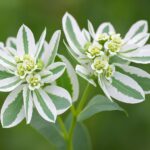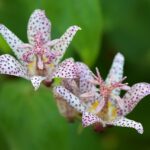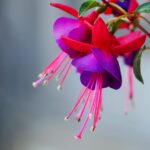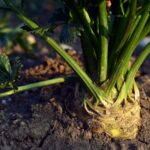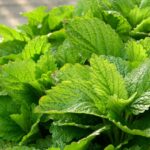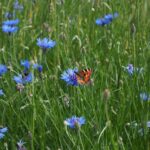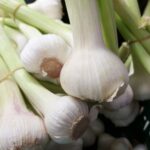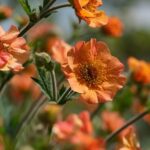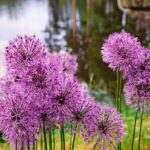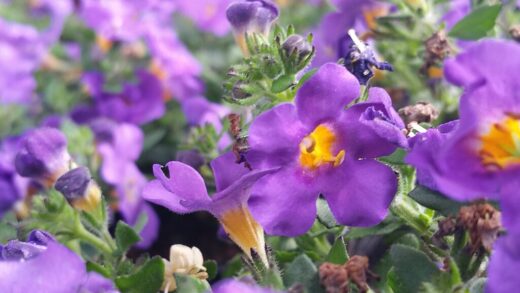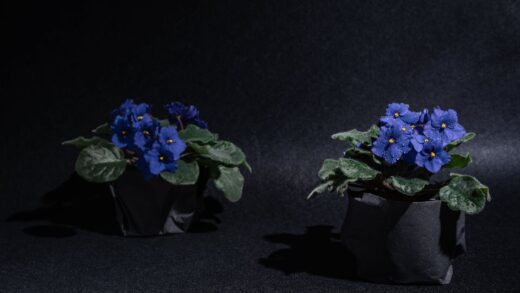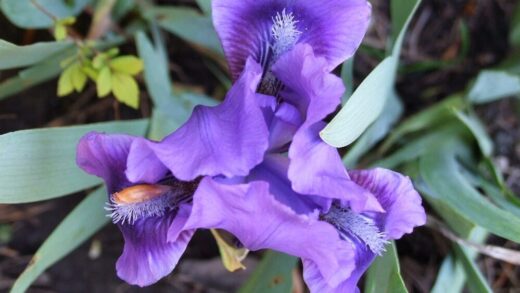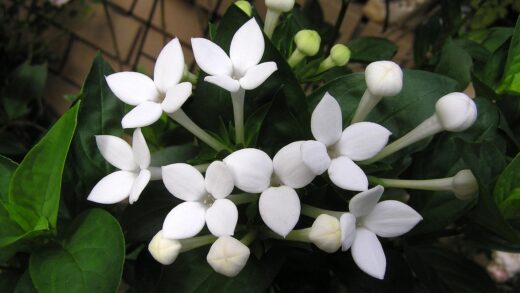The Kousa dogwood, known scientifically as Cornus kousa, is a stunning ornamental shrub or small tree native to East Asia, which can become a jewel of Hungarian gardens with proper care. Although it is considered a relatively resilient plant, successful overwintering, especially for young specimens, requires conscious preparation and attention from the gardener. Careful preparations not only ensure the plant’s survival during the harsher months but also lay the foundation for the abundant flowering of the following spring and the plant’s overall good health. The overwintering process is not just a single task but a complex series of actions starting in the autumn, with each element contributing to the final success.
A crucial step in preparing for winter is choosing the right growing location, which is decided at the time of planting. The Kousa dogwood prefers a location sheltered from the wind and in partial shade, where it is protected from drying winter winds and the harsh, early spring sun. Harsh winter winds can significantly contribute to the desiccation of shoots and buds. Winter sunlight can also cause problems, especially on young trees with thin bark, where the alternation of daytime warming and nighttime frosts can lead to bark splitting, known as sunscald. Therefore, it is ideal to plant it on the north or east side of a building or under the cover of a larger group of evergreens.
Adjusting the autumn watering schedule is also essential for successful overwintering. In the weeks before the first frosts, the plant should be watered deeply but less frequently, so that the root zone is sufficiently filled with moisture. This water reserve is vital during the winter period when the plant cannot absorb water from the frozen ground, while the winter sun and wind continue to cause evaporation. At the same time, overwatering and standing water should be avoided, as this can lead to root rot, especially in heavier clay soils. The goal is to achieve and maintain a moist, but not waterlogged, soil condition until winter sets in.
Modifying the nutrient supply in autumn is another critical element of preparation. From the end of summer, or late August at the latest, the use of high-nitrogen fertilizers should be avoided, as nitrogen stimulates new, tender shoot growth that cannot mature and lignify sufficiently before the frosts. These shoots are extremely sensitive to frost and can easily freeze back, causing unnecessary stress to the plant. Instead, applying a low-nitrogen, high-phosphorus and potassium fertilizer in early autumn is recommended to promote root development and enhance the frost resistance of the plant tissues.
Protecting Young and Container-Grown Plants
Newly planted, young Kousa dogwoods are particularly vulnerable in their first few years, as their root systems have not yet penetrated deep enough and are not extensive enough to support the plant stably. For these specimens, special attention must be paid to protecting the trunk from bark splitting caused by winter sun and damage from rodents. Wrapping the trunk with burlap, reed matting, or a special commercial tree wrap provides an effective solution. This protective layer not only protects against sunburn but also insulates the cambium layer beneath the bark from extreme temperature fluctuations.
More articles on this topic
Protection through mulching is beneficial for Kousa dogwoods of all ages but is essential for young plants. A 10-15 centimeter thick layer of organic mulch, such as pine bark, wood chips, or shredded leaves, spread over the root zone acts as an insulating blanket, protecting the soil from deep freezing and the damaging effects of continuous freeze-thaw cycles. It is important that the mulch layer does not directly touch the plant’s trunk; a gap of a few centimeters should be maintained to prevent moisture accumulation and the potential development of fungal infections or insect damage at the base of the bark.
Overwintering Kousa dogwoods grown in containers presents the greatest challenge, as their root systems are fully exposed to the elements. The small amount of soil in a pot freezes much faster and deeper than garden soil, which can lead to the complete death of the roots. The safest solution is to move the containerized plant to an unheated but frost-free, sheltered location, such as a garage, shed, or a cold frame for the winter. The goal is not to keep the plant warm, but to prevent the root ball from freezing solid.
If moving the containerized plant is not feasible due to its size or weight, on-site insulation can be an alternative. The pot itself should be wrapped in several layers of burlap, bubble wrap, or other insulating material to reduce the penetration of cold. Another effective method is to temporarily sink the pot into the ground or place it in a larger box and fill the space between the pot and the box with straw or fallen leaves. These methods mimic the insulating capacity of garden soil, protecting the root system from extreme cold and rapid temperature changes.
Preventing Pests and Diseases During Winter
Preventative plant protection is an integral part of winter preparation, with the first and most important step being autumn cleanup. All fallen leaves, fruits, and other plant debris must be carefully collected and removed from under the tree. This debris provides an ideal hiding and overwintering place for the spores of many pathogenic fungi, such as anthracnose, as well as the eggs and pupae of pest insects. A clean environment significantly reduces the risk of spring infections and does not attract rodents to nest near the trunk.
More articles on this topic
A dormant season spray is another critical preventive measure that should be applied after leaf fall but before the onset of persistent frosts (usually around 5°C). Applying a suitable copper or oil-based dormant spray effectively destroys overwintering pests hiding in the crevices of the bark, such as scale insects, mites, and their eggs. During spraying, care must be taken to ensure complete coverage so that the substance reaches all parts of the tree, including the most hidden corners. This treatment lays the groundwork for the plant’s clean, healthy start in spring.
During the winter months, the trunks of young trees are seriously threatened by rodents, especially field voles and rabbits. Due to the scarce food supply, these animals readily gnaw on the tender bark, which in severe cases can lead to the complete death of the tree, a phenomenon known as girdling. The most effective method of protection is to install physical barriers, such as a fine-mesh wire screen or a plastic tree guard around the trunk. It is important that the protective cover extends above the expected snow line and is pushed slightly into the soil at the bottom to prevent voles from tunneling underneath.
Although the main pruning time for Kousa dogwood is early spring, it is also worthwhile to perform a “sanitation pruning” during the winter. This involves removing any dead, damaged, diseased, or crossing branches. This intervention has several benefits: it improves air circulation in the crown, reducing the chance of fungal diseases developing in the spring, and it removes potential entry points for infections. Always use clean, sharp tools for pruning to ensure the cuts are smooth and heal quickly.
After Winter and the Spring Awakening
As the end of winter approaches, patience and correct timing are important when removing winter protection. Many make the mistake of removing the coverings too early at the sight of the first spring-like days. However, a late, hard spring frost can cause serious damage to the suddenly unprotected trunk and swelling buds. It is best to wait until the danger of hard frosts has definitively passed and temperatures remain consistently above freezing. The swelling of the plant’s buds can also be a good indicator for choosing the right time for removal.
Once the soil thaws, the Kousa dogwood will again need an adequate water supply to begin its spring development. Check the soil moisture, and if the winter was dry, help the plant rehydrate and start new growth with a thorough, deep watering. However, it is wise to wait with spring fertilization until the plant is fully leafed out. Applying fertilizer too early can stimulate sudden, vigorous growth that could easily be damaged by a late frost.
With the arrival of spring, thoroughly inspect the plant to assess any winter damage. Look for dieback caused by frost, branches broken under the weight of snow or ice, and signs of sunscald on the trunk. Prune all dead or damaged parts back to a healthy, living bud or branch so they do not drain unnecessary energy from the plant. Unfortunately, there is not much that can be done about sunscald, which appears as discolored or cracked bark; the most important thing is to keep the tree healthy, allowing it to heal the wound over time.
In summary, the successful overwintering of a Kousa dogwood is the result of a proactive process that begins in the autumn, based on prevention and careful protection. Choosing the right growing location, conscious autumn watering and nutrient supply, and effective winter protection—especially for young and containerized specimens—guarantee that the plant not only survives but greets the spring in thriving health. A well-cared-for, healthy Kousa dogwood will, in turn, reward the effort with its stunning flowering and unique appearance year after year, becoming a prominent feature of the garden for many years to come.

